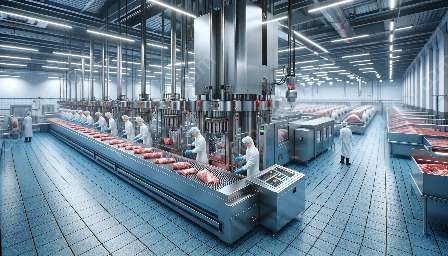Smoking is an ancient technique used to preserve and flavor foods, particularly meat. Smokehouses play an essential role in this process and are intrinsically linked to meat slaughter and processing equipment, as well as meat science. In this comprehensive guide, we will delve into the world of smokehouses and smoking techniques, exploring their history, methods, and impact on meat quality. We will also discuss their compatibility with meat slaughter and processing equipment and explore the scientific principles that underpin the art of smoking.
History of Smokehouses and Smoking Techniques
The practice of smoking food dates back thousands of years, with evidence suggesting that early humans used smoke to preserve and enhance the flavor of their food. Smokehouses have been a fundamental part of this process, providing a controlled environment for the smoking of various meats. Throughout history, smokehouses have evolved from simple, makeshift structures to sophisticated, purpose-built facilities, reflecting the significance of smoking in culinary traditions around the world.
Types of Smokehouses
Smokehouses come in various forms, each designed to achieve specific smoking results. Traditional smokehouses were often constructed from materials such as wood or bricks and relied on burning wood or other combustible materials to generate smoke. In modern times, smokehouses have become more sophisticated, incorporating technologies such as electric or gas-powered smokers, which offer greater control over temperature and smoke production. Additionally, portable smokehouses have gained popularity among home cooks and small-scale producers, allowing for experimentation with different wood chips and smoking techniques.
Smoking Techniques
Smoking is a delicate art that requires a deep understanding of the interplay between wood, heat, and airflow. Different smoking techniques, such as hot smoking and cold smoking, yield distinct flavors and textures in the meat. Hot smoking involves exposing the meat to both smoke and heat, resulting in fully cooked, smoky-flavored products, while cold smoking imparts a subtler smoke flavor while preserving the meat’s raw state. The choice of wood chips and the duration of smoking also significantly impact the final product, offering a wide range of flavor profiles to explore.
Connection to Meat Slaughter and Processing Equipment
Smokehouses are an integral part of the meat processing industry, where they are often linked to various equipment used in slaughter and processing facilities. From smoking chambers to smoke generators, this equipment plays a crucial role in imparting flavors, extending shelf life, and meeting food safety standards. Furthermore, advancements in smokehouse technology have led to innovations in smoke application methods, allowing for greater precision in flavor development and smoke penetration in various meat products.
Meat Science and Smoking
The relationship between smokehouses and meat science is multidimensional, encompassing aspects of food safety, microbiology, chemistry, and sensory analysis. Meat scientists work closely with smokehouse operators to optimize smoking techniques, ensuring the quality and safety of smoked products. Understanding the chemical reactions that occur during smoking, such as the formation of smoke compounds and the impact on protein and lipid oxidation, is crucial in developing best practices for smokehouse operations.
Flavor and Preservation
Smokehouses not only infuse meat with distinct smoky flavors but also contribute to its preservation. The combination of smoke, heat, and airflow inhibits the growth of spoilage microorganisms, extending the shelf life of smoked products. Additionally, the complex compounds present in smoke contribute to the development of unique flavor profiles, enhancing the sensory experience of smoked meats.
Innovations in Smokehouses and Smoking Techniques
Advancements in technology and a deeper understanding of smoking processes have led to innovative approaches in smokehouse design and smoking techniques. From automated temperature control systems to the use of alternative smoke sources, the industry continues to evolve, offering improved efficiency and flexibility in smoke application. Furthermore, developments in sustainable smoking practices and the utilization of natural smoke components present exciting opportunities for enhancing the overall sustainability of smokehouse operations.
Conclusion
Smokehouses and smoking techniques are deeply rooted in culinary traditions and have a significant impact on the meat processing industry. Their connection to meat slaughter and processing equipment, coupled with insights from meat science, underscores the intricate relationship between smoking, flavor, and preservation. By embracing the art and science of smokehouses, producers and enthusiasts alike can continue to innovate, creating new and exciting smoked products while preserving the rich heritage of this time-honored culinary practice.

